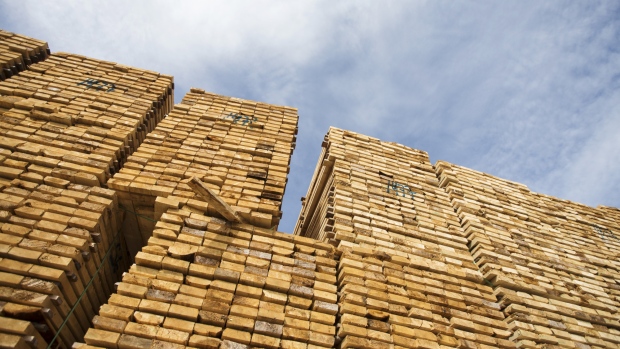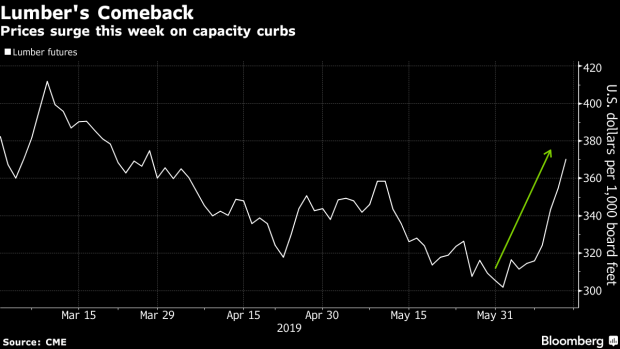Jun 13, 2019
Lumber heads for best rally in 24 years on mill curtailments
, Bloomberg News

Lumber futures are one pace for their biggest weekly gain since 1995 as Canadian mill curtailments are finally bringing into sight the end of overproduction that boosted building-company profit.
Vancouver-based Canfor Corp. this week announced it was “significantly” curtailing production capacity in British Columbia. That came after the company said earlier this month it would permanently close its Vavenby mill in the province. Norbord Inc. also said it was curbing some output, joining previously announced cuts from companies including Western Forest Products Inc. and West Fraser Timber Co.
“This is a good sign,” Joshua Zaret, a senior analyst with Bloomberg Intelligence, said in a telephone interview. “When you start to see capacity closures, it means you’re probably not that far away from the bottom of the pricing cycle.”
Lumber jumped by as much as the exchange maximum of US$19, or 5.4 per cent, to US$373.80 per 1,000 board feet Thursday on the Chicago Mercantile Exchange. Rolling most-active futures are up about 18 per cent this week, on pace for the biggest such advance since June 1995.

The capacity cuts come as prices are down more than 40 per cent from last year’s record high. Timber rose in the first half of 2018 as forest fires and rail-capacity problems in Western Canada affected supply, only to fall back when those disruptions dissipated. High production costs in Canada have also eaten into producer profits.
Canfor shares are up about 15 per cent this week amid the announced production cuts. The stock is still down almost 40 per cent in 2019.
The second half of this year could be better for producers. Lower U.S. mortgage rates signal that home building could rise. Still, analysts including at CIBC and Bank of Montreal have warned of lingering challenges in the market.
What Bloomberg Intelligence Says
“We’ll see a little improvement, but I don’t think anyone’s jumping for joy yet at this.”-- Joshua Zaret, senior analyst





